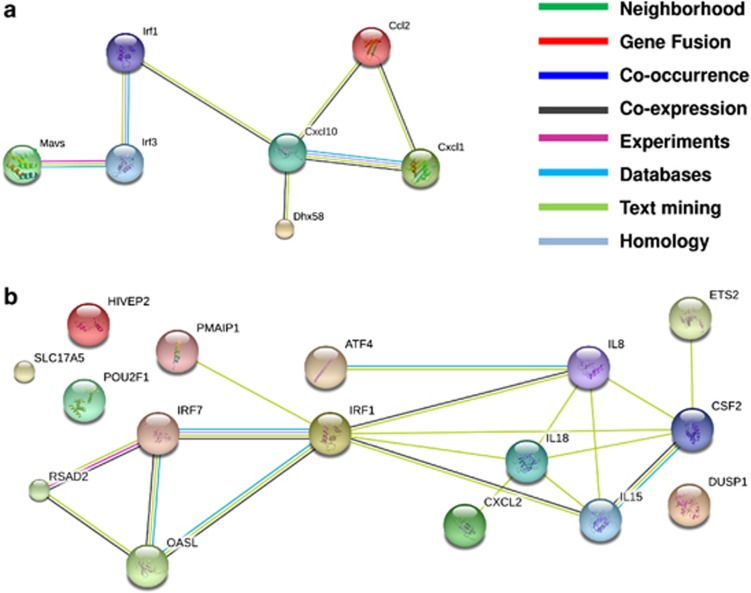Figure 2.
Activation of a VRGE profile in cancer cells undergoing ICD. The VRGE programme entails activation of various anti-viral processes like instigation of the type I IFN-regulatory system consisting of transcription factors like, IFN regulatory factor 3 (IRF3), IRF7, IRF5, IRF1112, 113 and secretion of IL-1 family cytokines like IL-1β and IL-18.114, 115 (a) This is an evidence-based network of the proteins whose genes showed an upregulated expression in the CD45-negative cells (predominantly tumour cells) retrieved from a doxorubicin-treated murine tumour, 2 days post treatment.29 (b) This is an evidence-based network of the proteins whose genes showed an upregulated expression in the T24 human bladder cancer cells retrieved 8 h after hypericin-based photodynamic therapy (Hyp-PDT).30 The types of evidence behind the network and the corresponding color code scheme are mentioned in the inset. The genes were considered to have role in a viral response based on data available in the GeneCards database version 3.09 (http://www.genecards.org/), wherever applicable. The networks were constructed through the tools available in the STRING database version 9.05 (http://string-db.org/)

